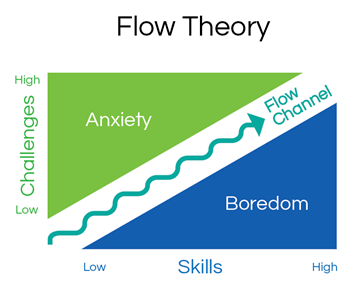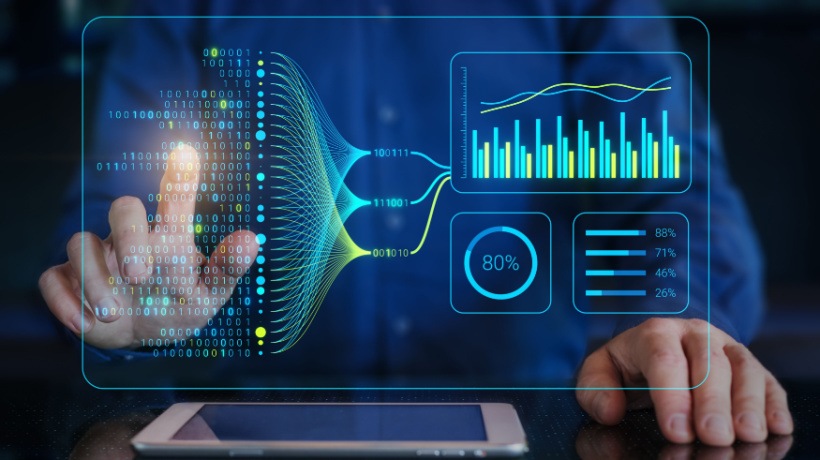Retention, eLearning Effectiveness, And Neuro-Science
Learning experts Michael Allen, Julie Dirksen, Clark Quinn, and Will Thalheimer have published twelve books on corporate learning between them. Their Serious eLearning Manifesto outlines why the majority of corporate training fails to impact performance, in large part because it’s not designed to engage the learner. As reported by the experts, adult learners in today’s hectic business world require a certain level of mental challenge to effectively learn knowledge and practice skills. Apparently, that level of challenge falls short in a lot of the corporate learning they reviewed while working with many organizations over the last several years.
Why Is Most Corporate Learning Not Mentally challenging?
Most often, it’s not that learning professionals don’t know how to create learning programs with the appropriate level of challenge and engagement to make learning effective. Instead, it’s usually the harsh reality of the time, resource, and cost constraints most learning professionals work within. Every organization provides training to its workforce primarily to improve performance and drive the growth of its business. So let’s discuss a bit of neuro-science, and how to leverage it to create corporate training that really engages learners and therefore actually improves performance all while still fitting within the time, resource, and cost constraints of today’s learning professionals.
A Key Element Of Neuro-science For Talent Development: A.G.E.S.
A.G.E.S. (which stands for Attention, Generation, Emotions, Spacing) stems from neuro-scientific research conducted over the last decade. According to the research, learning retention and recall is directly linked to how strongly each learner’s brain (specifically a part in the lower section called the hippocampus) is activated during training. I’d guess you care a lot less about the particulars of the hippocampus than about the impact on workforce performance that’s caused by improving the retention of your training. So let’s get to that!
The A.G.E.S. Model And Employee Performance
The A.G.E.S. model derives from the aforementioned neuro-scientific research, and focuses on four key elements that reduce distraction during training and dramatically improve retention: Attention, Generation, Emotion, and Spacing. Let’s discuss each of these factors.
- Attention.
Attention = Focus. Attention is harder to manage during training than ever before, across every learning modality: Classroom, virtual trainer-led, and online self-study. Do your employees multitask during trainer-led or eLearning? When they are “there” in learning programs, are they really “there”? For the brain’s hippocampus to fire at the level required to transfer learning from short-term memory to long-term memory (i.e. necessary for retention to happen), learners need to pay close attention during a learning task. Deep focus is a critical factor for learning retention. Employees will focus if they intuitively understand how the learning is relevant to their success; and if they are engaged, not bored. Engagement is making the learning (and the brain!) active, not passive. Apart from A.G.E.S., but also fundamental to Attention, is Mihaly Csikszentmihalyi’s widely known “Flow Theory”. As Flow Theory relates to education, our challenge as learning professionals is to create learning programs that are stimulating enough to undermine boredom without creating anxiety.

Boredom versus anxiety: Which theme is more prevalent in the Level 1 feedback your learners provide? For eight out of ten organizations, boredom is more commonly reported.
- Generation.
Generation = the Learner makes their own meaning. This means taking the “active” learning described above to the next level. Each learner must generate their own mental and memory links as they learn, not just passively listen. Learning programs that will be highly retained by your workforce must inspire the learner to create their own mental context in which to embed the knowledge. How is Generation most effectively done? There are several Generation strategies, but training that involves multiple senses is more likely to be retained. Therefore, participants should not just be watching or reading in their learning process. They must be thinking, listening, speaking, and/or doing. If learning requires the use of multiple senses, it activates different sets of the brain’s neural circuits to more tightly embed the meaning each participant creates during that learning. Perhaps the most important Generation strategy involves linking the learning to each employee’s job/role context. It is fundamental that knowledge be continually tied to why each employee needs to know it to better perform (relevance), and how to apply it to solve problems and get work done (application). Learning that enables each employee to effortlessly create their own meaning will be retained and applied, which ultimately leads to improved performance. - Emotion.
Feelings = Better Recall. The stronger the emotions each learner feels during training, the higher their retention of the material will be. These emotions can be either positive or negative. How can your learning programs engender feelings of success? Or fear of failure? Are the majority of your employees inherently competitive? Trigger that competitiveness to create a learning experience that makes them want to win, or at least avoid getting trash-talked by their colleagues! Also, human interactions between your employees and their colleagues (not to mention employees and their managers) engender emotion. Finally, think of ways to apply social rewards in your training to inspire emotive responses in your employees. Aside from A.G.E.S., there has been much discussion about gamification and game-based learning over the last 3-4 years. Both gamification (the application of game-design elements like badges and leaderboards into non-game contexts) and game-based learning (a type of game play that has defined learning outcomes) increase learner engagement. - Spacing.
Spacing = Learning Blocks + Spaced Repetition. Remember how you “crammed” for that big test in school? This was effective in amassing a large amount of knowledge, but only for short-term memory. A week later, your recall on a majority of that material was most likely greatly diminished. Long-term recall/retention is much better when we learn over several spaced sittings. Any amount of spacing makes a huge difference in terms of learning retention. The longer employees must remember the knowledge that makes them successful, the more the learning must be spaced out. That said, how often does a critical learning initiative include a reinforcement strategy that extends well beyond the foundation training? Unfortunately, most strategic corporate training initiatives are more of a “Big Bang” with little to no reinforcement. Spaced repetition is key to the effectiveness and retention of learning.
Conclusion
I hope this article has been helpful in outlining how our brains learn best, and how learning programs must be designed to maximize their impact on workforce performance and your business. Understanding the “science” behind effective learning can add credibility to your efforts to make learning in your organization as impactful as possible.
Time. Budget. Staff constraints.
Many reading this article already have the background and experience to create learning that follows the A.G.E.S. model. But do you have the opportunity to do so given the time, budget, and staff constraints imposed by the business? It is these constraints, not lack of expertise, that undermine the effectiveness of much of the learning we provide our employees.
Added to these learning and development challenges: Even well-designed learning programs have many obstacles to overcome in order to produce a measurable improvement in workforce performance. Many of these learner challenges are environmental, given the nature of work today:
- Too little focused time for learning.
- Too many competing priorities.
- The rapid pace of change in business that can often make learning out of date or irrelevant by the time it is made available.
It’s a challenging current and future landscape for Talent Development leaders and professionals. mLevel encapsulates all of the concepts of the A.G.E.S. for the most effective enterprise learning possible, while alleviating the considerable challenges of your organization’s time, budget, and staff constraints. It represents an invaluable capability to help your organization navigate your Talent Development landscape, both present and future.
Want to learn more?
- Download my free whitepaper titled The Brain, Neuro-Science and Learning Effectiveness.
- View a replay of a recent webinar I presented on this topic: How Neuro-Science Drives Learning Effectiveness & Retention








